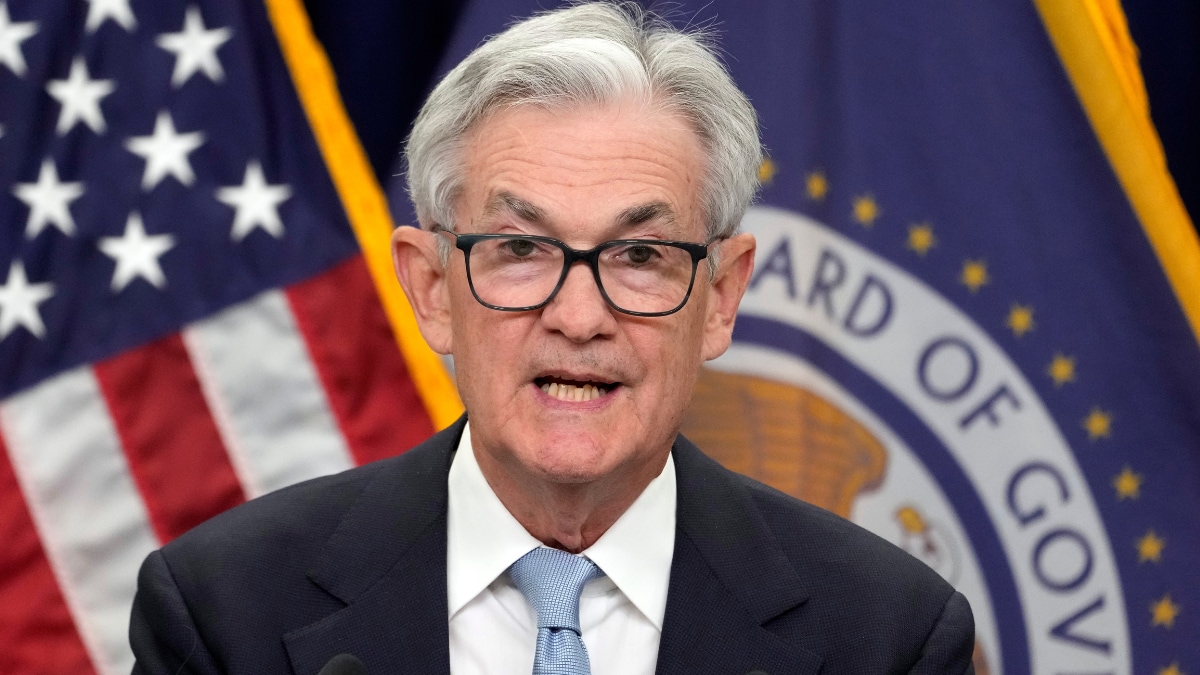US Federal Reserve Keeps Interest Rate Unchanged after 10 Straight Hikes – News18
Last Updated: June 15, 2023, 00:16 IST
Washington D.C., United States of America (USA)

Federal Reserve Board Chair Jerome Powell speaks during a news conference at the Federal Reserve, Wednesday, March 22, 2023, in Washington. (AP File Photo)
Fed added that doing so allows policymakers “to assess additional information and its implications for monetary policy”
The Federal Reserve kept its key interest rate unchanged Wednesday after having raised it 10 straight times to combat high inflation. But in a surprise move, the Fed signaled that it may raise rates twice more this year, beginning as soon as next month.
The Fed’s move to leave its benchmark rate at about 5.1%, its highest level in 16 years, suggests that it believes the much higher borrowing rates it’s engineered have made some progress in taming inflation. But top Fed officials want to take time to more fully assess how their rate hikes have affected inflation and the economy.
“Holding the target rate steady at this meeting allows the committee to assess additional information and its implications” for the Fed’s policies, the central bank said in a statement.
The central bank’s 18 policymakers envision raising their key rate by an additional half-point this year, to about 5.6%, according to economic forecasts they issued Wednesday.
The economic projections revealed a more hawkish Fed than many analysts had expected. Twelve of the 18 policymakers forecast at least two more quarter-point increases in the Fed’s rate. Four supported a quarter-point increase. Only two officials envisioned keeping rates unchanged.
The policymakers also predicted that their benchmark rate will stay higher for longer than they had envisioned three months ago.
One reason why the officials may be predicting additional rate hikes this year is that they foresee a modestly healthier economy and more persistent inflation that might require higher rates to cool.
Their updated forecasts show them predicting annual economic growth of 1% for 2023, an upgrade from their meager 0.4% forecast in March. And the officials expect “core” inflation, which excludes volatile food and energy prices, of 3.9% by year’s end, higher than they had expected three months ago.
The Fed’s aggressive streak of rate hikes, which have made mortgages, auto loans, credit cards and business borrowing costlier, have been intended to slow spending and defeat the worst bout of inflation in four decades. Mortgage rates have surged, and average credit card rates have surpassed 20% to a record high.
The central bank’s rate hikes have coincided with a steady drop in consumer inflation, from a peak of 9.1% last June to 4% as of May. But excluding volatile food and energy costs, so-called core inflation remains chronically high. Core inflation was 5.3% in May compared with 12 months earlier, well above the Fed’s 2% target.
Powell and other top policymakers have also indicated that they want to assess how much a pullback in bank lending might be weakening the economy. Banks have been slowing their lending — and demand for loans has fallen — as interest rates have risen. Some analysts have expressed concern that the collapse of three large banks last spring could cause nervous lenders to sharply tighten their loan qualifications.
The Fed has raised its benchmark rate by a substantial 5 percentage points since March of last year — the fastest pace of increases in 40 years. “Skipping” a rate hike at this week’s meeting might have been the most effective way for Powell to unite a fractious policymaking committee.
The 18 members of the committee have appeared divided between those who favor one or two more rate hikes and those who would like to leave the Fed’s key rate where it is for at least a few months and see whether inflation further moderates. This group is concerned that hiking too aggressively would heighten the risk of causing a deep recession.
In an encouraging sign, inflation data that the government issued this week showed that most of the rise in core prices reflected high rents and used car prices. Those costs are expected to ease later this year.
Wholesale used car prices, for example, fell in May, raising the prospect that retail prices will follow suit. And rents are expected to ease in the coming months as new leases are signed with milder price increases. Those lower prices, though, will take time to feed into the government’s measure.
The economy has so far fared better than the central bank and most economists had expected at the beginning of the year. Companies are still hiring at a robust pace, which has helped encourage many people to keep spending, particularly on travel, dining out and entertainment.
(This story has not been edited by News18 staff and is published from a syndicated news agency feed – Associated Press)
For all the latest business News Click Here


